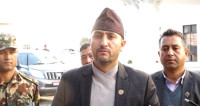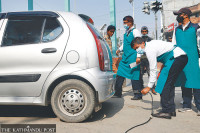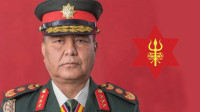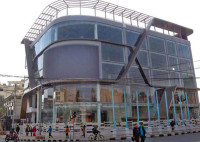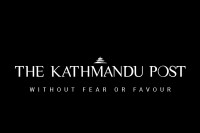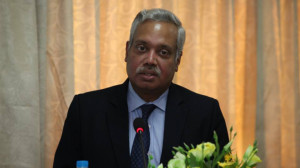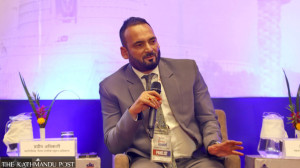National
Human Rights Watch says Nepal security forces used disproportionate force on youth protests
Urges the government to credibly investigate role of security forces, others in the two days of deadly violence.
Post Report
Security forces in Nepal used disproportionate force against youth-led protests on September 8, Human Rights Watch said on Thursday.
The interim government led by former chief justice Sushila Karki should investigate excessive force, arson, and mob attacks, including those who may have ordered unlawful acts, the human rights watchdog said.
Human Rights Watch in a statement issued from its headquarters based in New York said it found that police indiscriminately fired on protesters multiple times over three hours, killing 17 people in Kathmandu on September 8.
This sparked a second day of violence on September 9, but security forces appeared to fail to act when groups of people, some apparently not linked to the Gen Z protest, set fire to prominent government buildings; assaulted politicians, journalists, and others; and attacked schools, businesses, and media companies, the international rights organisation said.
“The recent violence in Nepal included serious human rights violations, and those responsible should be held accountable, whether they are security forces or political actors,” said Meenakshi Ganguly, deputy Asia director at Human Rights Watch. “The government should ensure that the investigations are independent, time-bound, and transparent, and that no one found responsible for breaking the law is unfairly protected from proper prosecution.”
The Karki government should recognise and address corruption and the failure to ensure rights, such as an adequate standard of living, which spurred the youth protests, Human Rights Watch said.
According to the organisation, it interviewed 52 witnesses, victims, journalists, medical professionals, politicians, and sources close to the security forces; verified photographs and videos posted to social media or shared with researchers; and visited hospitals and the scenes of protests and arson attacks.
The rights watchdog said police used lethal force to disperse young people after they gathered around the parliament, shooting people in the head, chest, and abdomen. Witness accounts and analysed footage do not show the grave and imminent danger to life that would justify the intentional use of lethal force, it said.
Witnesses and analysts interviewed by Human Rights Watch or quoted in the media said they suspected that the violence on September 9 may have been influenced by “infiltrators” affiliated with various political movements. The criminal justice authorities should investigate any credible allegations of criminal acts contributing to the violence, the rights watchdog said.
Pathologists at a Kathmandu morgue, which received 47 bodies over the two days, told Human Rights Watch that they determined 35 cases of death had been due to “high velocity gunshot wounds” to the head, neck, chest, or abdomen. Staff in various hospitals reported receiving hundreds of injured patients.
Police entered the grounds of a hospital on September 8 and charged staff and patients with batons, injuring a staff member, a hospital official told the Human Rights Watch. Protesters attacked ambulances on both days. Journalists were injured by impact projectiles fired by police on September 8, and protesters attacked media premises on September 9.
“The authorities should recognise that widespread impunity for human rights violations in the past helped enable the violence that occurred this time in Nepal,” Ganguly said. “It is crucial to reverse the decades-long tendency by successive governments in Nepal to bury investigations and stall prosecutions, and to bring about accountability and security sector reform.”




 6.12°C Kathmandu
6.12°C Kathmandu